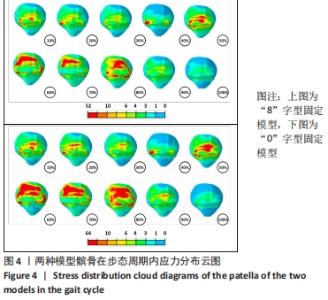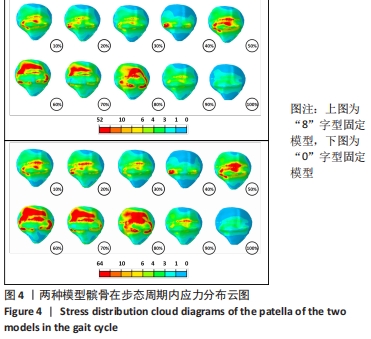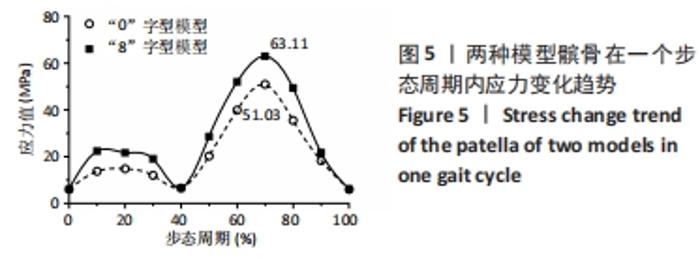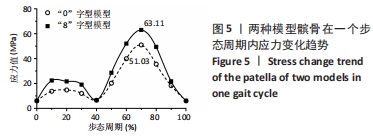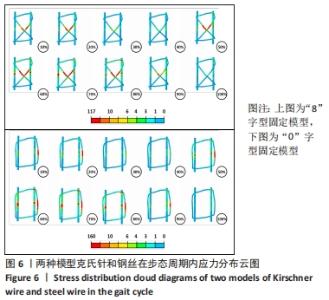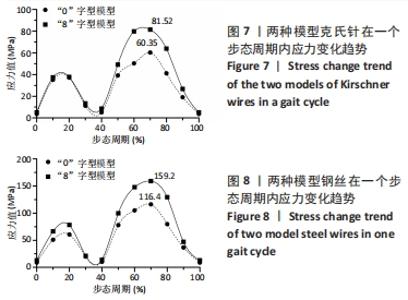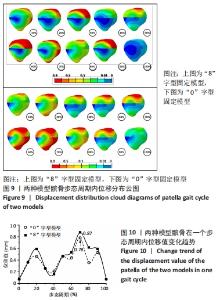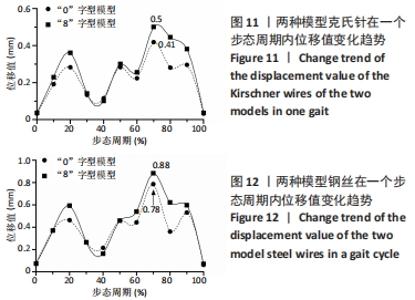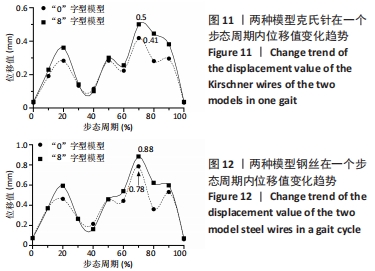[1] 於秀玲,许超,李顺东,等.张力带固定治疗髌骨横行骨折的研究进展[J].中国骨伤,2015,28(11):1069-1074.
[2] 陈琦.三枚空心加压螺钉与AO克氏针张力带治疗髌骨横行骨折的生物力学研究[D].大连:大连医科大学,2020.
[3] 洛绒赤乃,鹿伟,蒋莎莎,等.微创钢丝内固定治疗髌骨横行骨折临床效果观察[J].临床军医杂志,2020,48(7):751-753.
[4] 蔡史健,钟志刚,赵资坚,等.关节镜辅助下闭合复位内固定治疗髌骨骨折的疗效分析[J].齐齐哈尔医学院学报,2018,39(16):1899-1901.
[5] 韩春明,郭明珂,朱稷兴,等.微创空心钉三维固定治疗横形髌骨骨折临床观察[J].实用医学杂志,2018,34(18):3151-3152.
[6] 吴卫东,朱立帆,曾金才,等.钢丝环扎+双重髌前“8”字张力带治疗髌骨下极粉碎骨折[J].中国矫形外科杂志,2017,25(22):2103-2105.
[7] 员晋,兰海,李开南,等.关节镜辅助下微创髌前“8”字张力钢丝内固定治疗髌骨骨折[J].四川医学,2010,31(10):1480-1481.
[8] ZHANG J, EBRAHEIM N, LI M, et al. External fixation using locking plate in distal tibial fracture: a finite element analysis. Eur J Orthop Surg Traumatol. 2015;25(6):1099-1104.
[9] 蒙德鹏,欧阳跃平,侯春林.花瓣状多轴锁定板固定髌骨Y形骨折的有限元分析[J].中国修复重建外科杂志,2017,31(12):1456-1461.
[10] 倪鹏辉,张鹰,杨晶,等.临床骨科中应用的有限元分析法:新理论与新进展[J].中国组织工程研究,2016,20(31):4693-4699.
[11] 徐洪璋,余斌.髌骨骨折不同张力带内固定的有限元模型的建立和分析[J].实用医学杂志,2011,27(6):1000-1002.
[12] 黄晓燕,薛锋,殷诺,等.双螺栓与克氏针张力带固定治疗髌骨横形骨折模型的有限元分析[J].生物骨科材料与临床研究,2018,15(4): 6-8,82.
[13] 谭哲.髌骨横形骨折微创“8”字钢丝内固定的疗效和有限元分析[D].遵义:遵义医科大学,2019.
[14] LING M, ZHAN S, JIANG D, et al. Where should Kirschner wires be placed when fixing patella fracture with modified tension-band wiring? A finite element analysis. J Orthop Surg Res. 2019;14(1):14.
[15] 徐洪璋.髌骨骨折张力带内固定有限元模型的建立和分析[D].广州:南方医科大学,2011.
[16] 郑季南,徐新华,洪庆南,等.髌骨骨折不同改良方式张力带钢丝固定的生物力学研究与临床应用[J].中国骨伤,2002,15(4):208-210.
[17] 徐洪璋,余斌.髌骨骨折AO张力带内固定有限元模型的建立和分析[J].中国组织工程研究与临床康复,2011,15(13):2339-2344.
[18] 何泽阳.微型钢板固定髌骨分层骨折的有限元模型建立和分析[D].石家庄:河北医科大学,2016.
[19] 凌铭.髌骨改良张力带的临床应用与生物力学研究[D].上海:上海交通大学,2019.
[20] MUELLER TL, CHRISTEN D, SANDERCOTT S, et al. Computational finite element bone mechanics accurately predicts mechanical competence in the human radius of an elderly population. Bone. 2011;48(6):1232-1238.
[21] STANDARDS B. Implants For Surgery-Wear of total knee-joint prostheses-Part3:Loading and displacement parameters for wear-testing machines with displacement control and corresponding environmental conditions for test, 2014.
[22] 王奕翔,王丽娟,杨培丽,等.髌骨骨折研究进展[J].甘肃科技,2016, 32(18):124-127.
[23] 李波,张树明,乔雅楠.髌骨骨折各种治疗方法的利弊综述[J].中国矫形外科杂志,2014,22(8):719-722.
[24] MELVIN JS, MEHTA S. Patellar fractures in adults. J Am Acad Orthop Surg. 2011;19(4):198-207.
[25] 张峻,候筱魁.髌骨的生物力学研究进展[J].医用生物力学,2004, 19(2):120-125.
[26] 蒙德鹏,欧阳跃平,陈寅生,等.X 形锁定接骨板加缝线环扎固定治疗横行髌骨骨折[J].中国矫形外科杂志,2017,25(10):884-887.
[27] 林奕鹏,岳凯,徐盈舒,等.新型可吸收空心螺钉结合不可吸收缝线张力带固定治疗髌骨骨折:与传统改良张力带的对比[J].中国组织工程研究,2019,23(22):3506-3511.
[28] 胡翰生,王静成,卢志华,等.髋关节三维有限元模型的构建及关节囊修复预后分析[J].南方医科大学学报,2020,40(12):1826-1830.
[29] 李咏壑,王献抗,孟昱,等.髋关节置换中短柄假体置入位置差别的力学分析[J].中国组织工程研究,2021,25(15):2394-2399.
[30] 黄桂武,李文昌,邬培慧,等.臼杯假体高度对臼杯-骨界面应力应变影响的有限元分析[J].中华关节外科杂志(电子版),2020, 14(5):578-583.
[31] GALLA M, LOBENHOFFER P. Patella fractures. Chirurg. 2005;76(10): 987-997.
[32] CARPENTER JE, KASMAN R, MATTHEWS LS. Fractures of the patella. Instr Course Lect. 1994;43:97-108.
[33] SABALIC S, KODVANJ J, PAVIC A. Comparative study of three models of extra-articular distal humerus fracture osteosynthesis using the finite element method on an osteoporotic computational model. Injury. 2013;44 Suppl 3:S56-61.
[34] 杨程,杨云.小规格65Mn弹簧钢丝生产工艺研究[J].金属制品, 2011,37(3):38-41.
[35] ZDERIC I, STOFFEL K, SOMMER C, et al. Biomechanical evaluation of the tension band wiring principle. A comparison between two different techniques for transverse patella fracture fixation. Injury. 2017;48(8): 1749-1757.
[36] 郑宣洪,邓开霞,高原,等.1.0 mm高强度耐弯曲胎圈钢丝生产工艺研究[J].金属制品,2017,43(4):13-15.
[37] DAGNEAUX L, ALLAL R, PITHIOUX M, et al. Femoral malrotation from diaphyseal fractures results in changes in patellofemoral alignment and higher patellofemoral stress from a finite element model study. Knee. 2018;25(5):807-813.
[38] HE S, HUANG X, YAN B, et al. Modified Technique of Separate Vertical Wiring for the Fixation of Patellar Inferior Pole Fracture. J Orthop Trauma. 2018;32(4):e145-e150.
|
